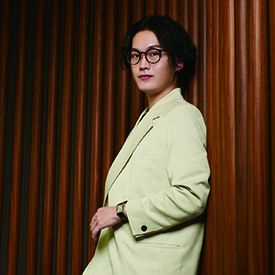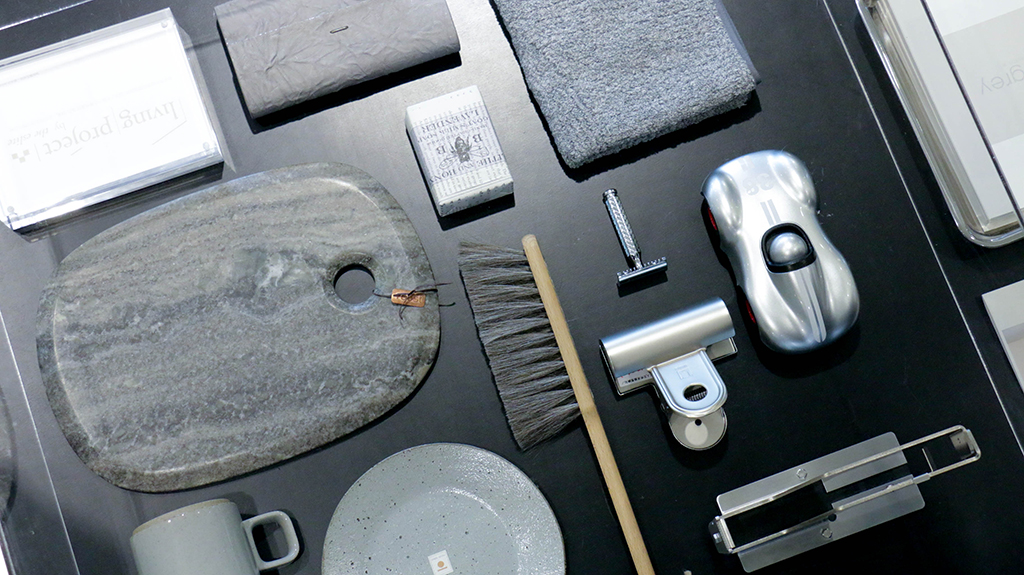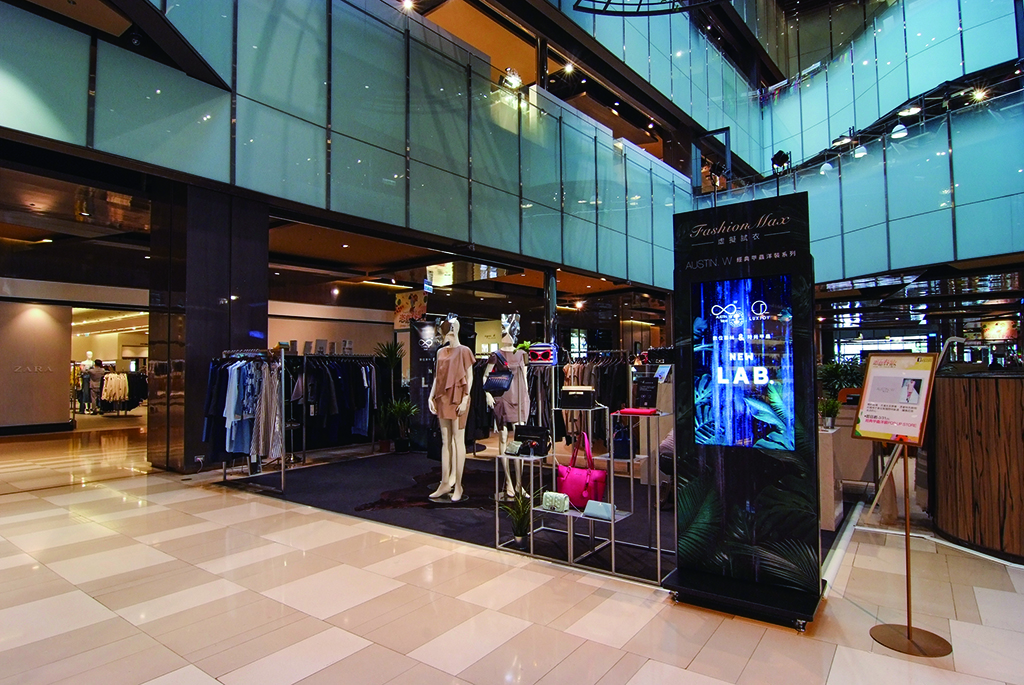AUSTIN.W吳日云服裝設計工作室創辦人
Founder of AUSTIN.W Wu Tzu-Yun Fashion Design Studio
Article of famous designers

AUSTIN.W吳日云服裝設計工作室創辦人
Founder of AUSTIN.W Wu Tzu-Yun Fashion Design Studio
“I am a fashiondesigner.” This is my opening remark in every interview I do with the media.The education well-beaten into us in the past always informs us that we need tostudy hard to “find a good job.” The occupation has become a label that definesa person. Is being a designer a good job? None of us knows exactly what theright answer is. If you can get a sense of accomplishment and see what you doas a lifetime career, then life is good. Nowadays in 2022, what we are pursuingisn’t simply a job, but a source of income and also something meaningful.
The sources of all designs come from ourperceptions. The architect An Yu-chien once said: “After physical senses areestablished, we can then talk about professional tools.” Opening one’s senses so we can understand theworld is the first step. Close your eyes and listen to your surroundings—noises in the city, the sound of rapid breathing, or the subtle movement ofair. Do we gradually lose the memories of taste, a lemon’s tartness, coffee’sbitterness, or yummy cake icing? Sensory memory is the most precious thing. Readily available onlineinformation and images on the screen cannot replace our most unique senses.
After opening one’s senses and receiving training in design, one canstylize and use clothing as a medium to produce creative ideas. One’s designworks will gradually transform into commodities. With a piece of clothingproduced, the next step is to develop a fashion series.Afterwards, one will move forward to become a clothing designer. These are onlythe most basic requirements. What’s truly crucial is grasping opportunities.Successful designers lead fashion trends and cooperate with professionals tolaunch influential timeless works. These opportunities include cooperation withbrands—clothing brands or cross-industry brands to raise the visibility ofindividual designers and their works. In addition, active participation indomestic and foreign competitions can also provide opportunities to networkwith the design industry and to know influential leaders such as fashionclothing procurement personnel, magazine editors, textile companies, and thosewho lead public opinion. Customizing clothing for celebrity is another way tobe successful.
Between Taiwan and the World
New York Fashion Week was my first design show after graduating fromcollege. Why was New York Fashion Week willing to give opportunities todesigners who are new to the industry? The Asia Fashion Collection carried outevery year by the Japanese Department Store PARCO and the VANTAN DesignInstitute recommends young designers from Asian cities to design clothes forfashion shows in New York. These shows provide opportunities to present somemajor cultural differences in creative storytelling, commodity marketability,team execution abilities, and performance creativity. As the supporting unitfor Taiwan’s textile industrialists, the Taiwan Textile Federation bridgescooperation between the textile industry and designer brands in order to marketTaiwan’s designs and fabric craftsmanship to the world.
Caption: New York Fashion Week (Photo by AUSTIN.WDesign)
The sustainable development ofdesigner brands comes from stable business practices. Participating in fashionshows provides an opportunity to be seen. Most of the Taiwan Proud productsthat often receive much publicity in the media have not yet been tested in themarket. Products that have good market sales need to strike a balance betweencreativity and business. Getting to know international brands and participatingin showroom and international trade shows to acquaint with clothing buyers is oneway. Before globalization, imported goods stores were the only channel forpeople to explore and get to know international brands. Goods selectors thenbegan to think about the styles of each store after the domestic market wasflooded with international brands. They combine fashion space with art, dailylife products, and even dining areas. Each store has become a rich expressionof the city and provides a market for small brands. These stores are notclothing chain stores. Their sales may not be high, but they have less pressurein terms of stockpiling. Such stores have become the cornerstone fordeveloping designer brands.
Caption: Backstage of the Asia Fashion Collection at NewYork Fashion Week

Caption: Style Selection by AUSTIN.W and the EsliteBookstore Living Project
The Past and Future of Fashion in a Decade
The major change in fashion every ten years is a flip between new trendsand retro. In 2008, as the subprime lending crisis occurred in the UnitedStates and the world fell into a recession, practical minimalism was on therise. Led by the then CELINE female designer, Phebe Philo, countless works ofcontemporary influence were launched, including silhouette clothing thatsymbolizes female power, large shopping bags, and so on. Since 2018, we’ve had no shortage of food andclothing, and we have extra money to spare and the energy to consume luxurygoods. Alessandro Michele of GUCCI is known for his maximalism. Flipping andstacking a brand’s historical totems, vintage imprints, and non-functional minibags are now popular.
Taiwanese designers are also being seen in this fashion wave. In 2018,Taiwan’s first Taipei Fashion Week SS19 was held. For many years I have beenteaching in colleges and universities, the question I ask in the first class isalways, what is Taiwanese fashion? For the answer, I get an impressionimprinted in my mind but have always failed to put it into words. Since theTaipei Fashion Week, designers have conveyed their fashion imaginations throughmaterial craftsmanship, sustainable design, Taiwanese Indigenous culture, Hakkaculture and traditional art. Dressing is a part of life. As people care moreand more about what they wear, Taiwan’s design capacity will grow more and morevisible in the world.
Caption: Taipei Fashion Week 22SS Beyond-Fashion and Art Confluence Show Photos
You may be a professional in the clothing and fashion industry or maysoon have a supporting role. The charm of fashion will never fade. It’s alwayscreating infinite imagination during the man’s finite lifespans. As a fashiondesigner, we are committed to creating meaningful works. There is no shortageof clothing in today’s world. The clothing industry encompasses things beyondslow life and fast fashion that people once talked about. Every piece ofclothing produced as a commodity or for a fashion show carries its ownmeanings. When it comes to a designer’s unique style and creativity,sustainable design that is friendly to the environment, or the virtual clothingNFT conforming to contemporary values, it’s necessary to return to a designer’s creative philosophy. Getting to know the selfis the first step to being one’s unique self. There is no need to be afraidthat of being your own person. We will all find our 𝝅 style of life.

Caption: Beautimode LUXJOY virtual dressing room